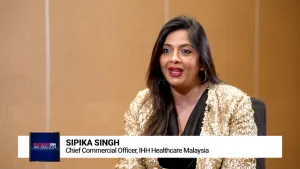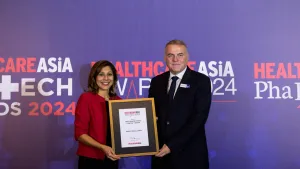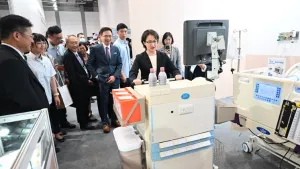Singapore Budget 2019 – Making healthcare more affordable and accessible
Singapore remains a leader in making healthcare more accessible for its growing pioneer generation. The focus now is likely to shift towards taking the digital route to making healthcare more affordable and accessible.
Consider this: An integrated app that connects your health records to monitor and prompt re-order of your medicine and grocery stock. It also suggests what to eat for the week supported by quick nutritional recipe videos with the option of ordering the necessary ingredients with one click.
With Internet of Things (IoT) enabled healthcare solutions supported by integrated medical records running on unique patient identifiers, they can connect residential homes, nursing homes and senior-friendly communities to grocery shops. The Health Promotion Board can drive this roll out by pairing with pharmacies to provide seniors with subsidies.
More incentives driven by smart devices should be introduced to promote healthy behaviors too. Geolocation trackers and nail ID patches can be adopted by Dementia-Friendly Communities for better safety and identification of dementia patients. A physical log-in tracker can prevent a widespread of illnesses such as dengue and HFMD by location/vicinity.
In a data-driven world, Singapore must work towards a secure centralised or de-centralised data exchange that holds data for all stakeholders (patients, provides, regulators etc.) that the entire population can interact with, interlinking their day to day activities from healthcare to nutrition to social living.
Enhancing data and analytics capabilities to mine this data, such as managing a data-driven population health platform will provide insights into citizen behaviors and assist in evidence-based policies and decision making for ageing populations.
This has the potential to be a goldmine of learning for Singapore. Running these platforms on forward-looking technological platforms with enhanced cybersecurity capabilities will also be key to ensure protection from data threats.
A holistic approach to healthcare
Our population is ageing rapidly, with a growing chronic disease burden. We must therefore create a stronger social network propelled by elderly-centred design. Our programmes have to be developed around education, environment, and nutrition, most suited to further empowering the elderly.
In particular, we could explore the following:
• With Singapore’s familial culture, we can expand senior living communities to accommodate more initiatives. Engaging the elderly with enriching activities such as caring for plants, or combining Singapore’s several nursing homes with daycare to create intergenerational centres where the elderly can frequently interact with young children, will instill a sense of responsibility and empowerment in the elderly. Schools can also organise community days where school children are buddied up with elderly residents for routine visits. These initiatives could also help the elderly tackle depression and loneliness through increased social interaction.
• Cooperate with and incentivise the private sector to operate means-tested healthcare at home programmes with mobile clinics, or regular but affordable home visits by nurses and doctors. Subsidising renting of hospital beds and equipment for use at home will complement this.
• Providing subsidies and free distribution of simple, human-centric innovative gadgets and assistive utensils for elderly patients with chronic diseases such as stroke, arthritis and Parkinson’s to improve quality of life.
Affordable healthcare for all
As healthcare expenditure and cost of living increases, planning for financial inclusion will be key. Our healthcare system has undergone significant financing reform to move towards universal health coverage, to expand financial protection to the elderly, cancer patients and those suffering from chronic diseases such as diabetes.
However, in light of rapidly inflating healthcare costs, it may be worthwhile to allow tax deductions (not tied to CPF contributions) for medical related insurance premiums. This will encourage more taxpayers to take up health insurance policies for themselves and their families and offer them greater access to healthcare.
To further encourage preventive healthcare, tax relief for medical costs incurred by those over 50 years old for annual health screening may also be considered. What is imperative will be to ensure adequate and appropriate medical screening rather than unnecessary medical tests.
Budget 2018 placed a community emphasis to tackle ageing issues, including expansion of subsidies, home-based rehabilitation nursing support after hospital discharge, reorganisation within public offices to create a streamlined taskforce, dementia preparedness and expansion of community networks for seniors to provide active ageing and loneliness support, amongst others.
We hope that Budget 2019 can take a step further by building a customer-centric and affordable healthcare ecosystem by encouraging public-private partnerships, and supporting start-ups and established healthcare players in developing and deploying healthcare solutions and technologies.


















 Advertise
Advertise


